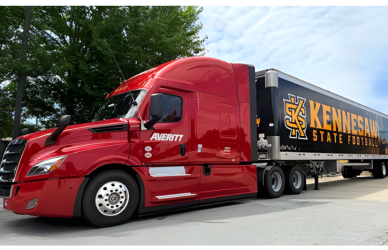In the trucking world, gear shifting remains a crucial skill. Among drivers, the conversation often turns to the methods of floating gears versus double clutching. Though each has its place, seasoned drivers frequently opt for floating gears to achieve smoother gear changes and less wear on the clutch. Mastering this technique can enhance your driving experience and prolong your truck’s lifespan. If you’re eager to elevate your gear-shifting prowess, here are some expert tips to help you conquer floating gears in your semi-truck.
Understanding Floating Gears
Before we explore the techniques, let’s clarify what floating gears means. This shifting method involves changing gears without using the clutch, except when starting and stopping. Unlike double clutching, which requires engaging the clutch to shift between gears, floating relies on synchronizing engine and road speeds for seamless transitions. Many experienced drivers prefer this approach due to its ability to reduce knee strain and minimize clutch wear.
Technique #1: Mastering Throttle Control
Throttle control is paramount when floating gears. When shifting, applying or easing off the accelerator with precision is vital. The right amount of throttle adjustment allows the transmission to move smoothly into the next gear without jerks or force. Think of it as guiding the engine toward the next gear by adjusting RPMs to match road speed.
Pro Tip: Use gentle throttle adjustments. The aim is to harmonize engine RPMs with the transmission, facilitating a smooth gear shift.
Technique #2: Timing Your Shifts Accurately
In floating gears, timing is crucial. The key to successful shifts lies in matching engine speed with the transmission’s optimal range. When your engine revs reach the sweet spot, briefly release the throttle. This pause lets the engine speed drop just enough for an effortless shift into the next gear.
Each truck has its rhythm, so perfecting timing requires practice. Pay attention to your engine’s sound and monitor the RPM gauge to gauge the right moment to shift. With time, your instincts will guide you to make precise shifts.
Pro Tip: Difficulty shifting smoothly often indicates a timing issue. Be patient and learn your truck’s unique engine response and gear ratios.
Technique #3: Avoid Forcing the Gearshift
A common mistake among those new to floating gears is forcing the shifter. Proper floating should feel smooth and natural. If you’re struggling to engage a gear, it’s a sign that RPMs aren’t aligned. Forcing the shift can damage your transmission, so wait until everything syncs.
Instead of exerting pressure, use a light touch on the shifter. When the transmission is ready, the gear will naturally engage, preserving your transmission’s integrity.
Pro Tip: Pay attention to the gear’s natural engagement point. If it resists, ease off and adjust the throttle before trying again.
Floating Gears vs. Double Clutching
The choice between floating gears and double clutching depends on personal preference and driving style. Double clutching offers precision, especially helpful for newcomers who need confidence. It involves using the clutch for each shift, enhancing control and preventing transmission damage.
Floating gears, once mastered, reduce physical strain and minimize clutch wear. It’s favored by experienced drivers seeking a more fluid gear-shifting experience.
Why Mastering Floating Gears Still Matters
With the rise of automatic transmissions, manual shifting might seem outdated. However, manual transmissions remain prevalent in specific trucking sectors. Mastering floating gears enhances truck control and prepares you for diverse driving conditions.
For example, manual transmissions enable clutch “feathering” during challenging maneuvers like skid recovery or navigating adverse terrains. This control level can be a lifesaver, providing more command than an automatic transmission.
Learning to float gears can elevate your truck-driving skills. By mastering throttle control, timing, and avoiding forced shifts, you’ll achieve smoother transitions, reduce clutch wear, and extend your truck’s transmission life. While not the initial technique new drivers learn, floating gears are valuable for enhanced comfort and efficiency on the road.
By refining these skills, you’ll handle long hauls with ease, lessen clutch-related strain, and keep your truck in prime condition for years.











